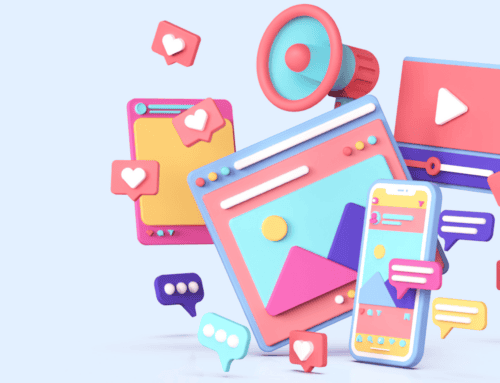Digital marketing campaigns exist in order to generate leads and convert those leads into customers. Though a well-built website will attract visitors, it’s not as focused as a squeeze page or landing page. As a result, it produces fewer opportunities and fewer sales. Incorporating a squeeze page or landing page into your marketing helps move visitors through the sales funnel, leading to better results and higher revenue. For those unaware of the relative merits of a squeeze page vs. a landing page, this guide will explain their purpose, layout, and central features, to help take your marketing to the next level.
Squeeze Page vs. Landing Page
Landing pages are specialized web pages visitors “land” on when they click on a digital ad or email link. While a home page is designed to capture attention, educate users, and promote content, a landing page is designed to encourage one specific action. Technically speaking, a squeeze page is a landing page, albeit one with a narrow purpose. Squeeze pages capture people at the start of the sales journey while landing pages capture them towards the end.
Elements of a Squeeze Page
The purpose of a squeeze page is to collect information so visitors can be contacted later with emails or special offers intended to nudge them down the sales funnel. In exchange, visitors are given some type of gift, also known as a lead magnet, such as a newsletter subscription, discount code, free sample, or access to unique content (eBook, podcast, video, PDF, etc.).
Squeeze pages are most effective when their design is kept simple. Most contain only a handful of elements, including:
- Headline. Summarizes the benefits of the lead magnet in as few words as possible. It tells visitors what they’re getting and why they want it.
- Value Proposition. Expands on your headline and showcases the advantages the visitor will enjoy if they enter their data. Keep it short, no more than a few lines.
- Call to Action. Urges visitors to enter their information.
- Featured Image. Helps people visualize the benefits they’ll receive by following the call to action.
- Embedded Fields. Limit the information you gather to names and email addresses. The shorter the form, the more leads it’ll generate.
To further convince people that what you’re offering is worth their while, some companies add social proof as well ‒ quotes from key customers backing up the claims of their value proposition. Gathering social proof requires some effort, but adds weight to your claims. Remember, because there’s no way to evaluate your proposition until they share their details, visitors are making this exchange sight unseen. So anything you can do to sell them on its benefits will deliver better results.
Elements of a Landing Page
The purpose of a landing page is to convert leads into paying customers. Rather than describing your company as a whole, it focuses on one particular product or service. As a result, landing pages are significantly longer than squeeze pages, with a more elaborate design.
- Banner & Supporting Headline. Arouses interest, while also describing the benefits of your goods and services. Because headlines work best when they’re concise, adding a supporting headline allows you to elaborate on your message without cluttering the banner heading.
- Hero Image. An oversized banner image at the top of the page, is designed to grab the visitor’s attention. The hero image should be supported by complementary images further down the page, to highlight benefits and your call-to-action.
- Selling Proposition. Besides breaking down the details of your products, your selling proposition should also explain what sets you apart from the competition and why you’re better qualified to address your customers’ pain points.
- Call to Action. Unlike a squeeze page, a landing page generally has at least two calls to action: one above the fold and another below it. Depending on the page length, more may be needed, to ensure visitors don’t have to scroll through all your content to complete their purchase.
- Video. Customers respond to video more than almost any other type of content. While squeeze pages don’t have enough room for it, embedding video is an excellent way to convert visitors. For maximum impact, place it above the fold, so it’s one of the first things they see.
Following Up
Squeeze pages have one of the highest conversion rates of any marketing tool. They’re easy to build and deliver strong leads right to your doorstep. But squeeze pages are only the tip of the spear. Once you’ve captured the visitor’s details, you’ll need a follow-up plan to convert them into customers.
- Make Good on Your Bargain. Squeeze pages exchange gifts for information. If you don’t adhere to your end of the bargain, you’ll poison the lead. Remember, it only takes one bad experience to lose a customer, so no matter what you use to entice your visitors, make sure they receive it as quickly as possible.
- Say Thank You. Create a pop-up, email, or supplemental page thanking the visitor for taking advantage of your offer. It’s not necessary, yet a professional courtesy that helps advance the relationship. Add some details about their gift as well: a link to the download, copy of the discount code, news about delivery dates, etc.
- Download Their Data. If your company uses customer relationship management (CRM) software, make sure every name and email address entered into your squeeze page is transmitted automatically to your CRM, so you know the source of each lead and can start moving them through your sales pipeline.
- Reach Out. Before launching a squeeze page, make sure you have a plan in place to follow up. Email campaigns are some of the most cost-effective marketing strategies, but they need to be timely in order to build on the goodwill generated by your lead magnet.
Creating Squeeze Pages
Converting leads to sales requires a holistic marketing strategy. YPM not only creates squeeze pages that convert, but sophisticated campaigns to capitalize on the leads they generate. Contact us today to learn how we can help turn your marketing into a digital juggernaut.





